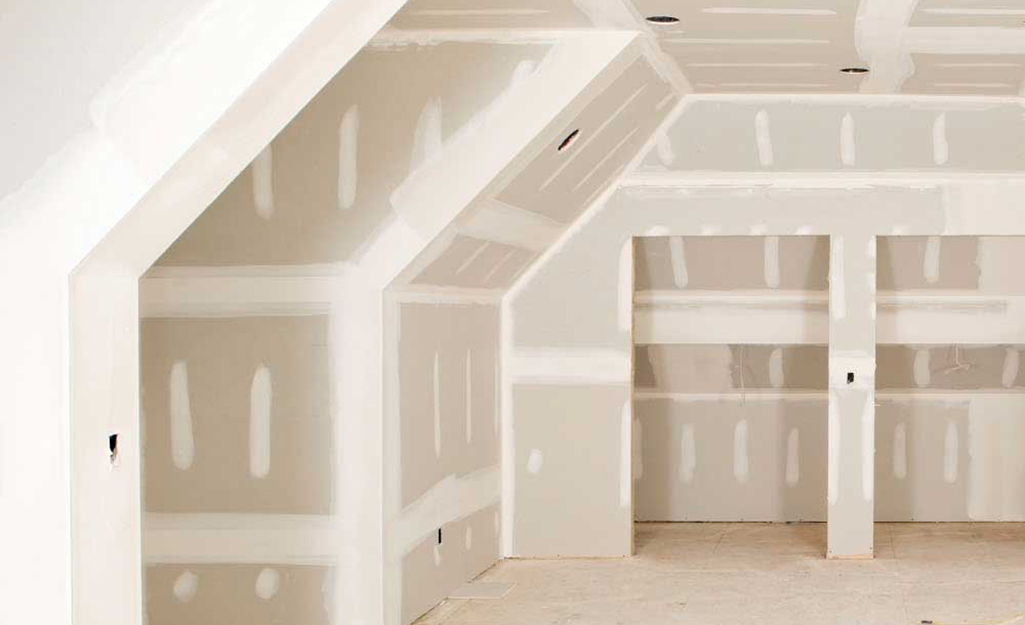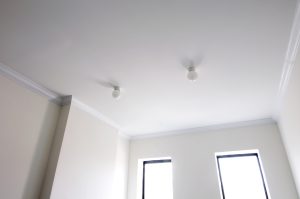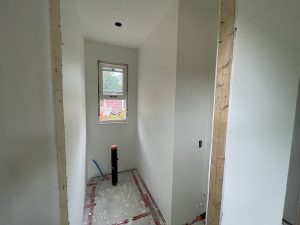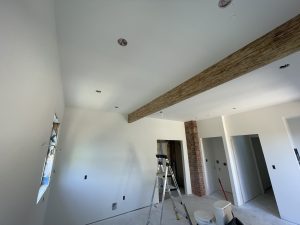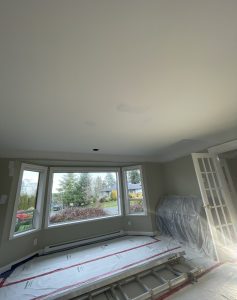In large residential construction, drywall installation plays a critical role in the overall quality and finish of a project. Whether you’re constructing a luxury estate, a multi-unit building, or a high-end custom home, getting the drywall work right is essential. As the demand for expansive residential properties continues to grow in places like Victoria, drywall contractors face increased pressure to deliver seamless, high-quality work.
However, drywall installation in large residential projects comes with its own set of challenges. Issues like cracking, uneven finishes, and moisture damage can be more pronounced in large-scale builds due to the sheer size and complexity of the structure. Additionally, environmental factors, soundproofing requirements, and multi-level designs add another layer of difficulty.
In this article, we will explore some of the most common drywall challenges that arise in large residential construction and how professional drywall contractors can overcome them. From ensuring proper installation techniques to selecting the right materials, this guide will help you tackle these issues head-on.
1. Cracking in Drywall Panels
One of the most prevalent challenges in drywall installation is cracking, particularly in large residential projects where homes experience more structural movement due to their size. Cracks in drywall can be caused by several factors, such as:
- Improper installation techniques: If drywall sheets are not properly supported or secured, they may shift and crack over time.
- Structural movement: Large homes often experience settling or shifting due to the weight of the structure, which can lead to cracks in the drywall.
- Fluctuations in temperature and humidity: In regions like Victoria, where coastal weather causes significant changes in humidity and temperature, drywall can expand and contract, resulting in cracks.
Solution:
To prevent drywall cracking, it is crucial to implement proper drywall installation techniques. This includes leaving enough expansion gaps to accommodate any natural movement in the building. Using fiberglass tape instead of standard paper tape at seams can add strength and reduce the likelihood of cracking. In areas where cracks are more likely, such as high-stress areas like corners and ceilings, you should reinforce the drywall with extra care. Choosing moisture-resistant or flexible drywall products can also minimize the impact of environmental factors on large residential construction projects.
For large Victoria homes, addressing potential cracking early in the project by taking preventive measures, like adding control joints, can save both time and money in the long run.
2. Uneven Surface Finish
Achieving a perfectly smooth surface finish is critical in large residential homes where imperfections are easily visible, especially in areas with lots of natural light or expansive walls. Uneven surfaces can arise due to several reasons:
- Inconsistent application of drywall compound: If too much or too little joint compound is applied, it can result in surface irregularities.
- Improper sanding techniques: Over-sanding or under-sanding drywall joints can leave rough patches or overly smooth areas that stand out under paint or finishes.
- Fastener issues: Poor fastening practices, such as screws or nails not being flush with the drywall surface, can create bumps or visible imperfections.
Solution:
For a flawless finish in large residential drywall installations, contractors should adhere to the Level 5 drywall finish standard. This technique involves applying a skim coat of joint compound over the entire surface, which helps to smooth out imperfections and create a consistent texture across large areas. Using proper tools, such as a high-quality trowel and a sanding pole with fine-grit sandpaper, is essential.
Additionally, contractors should take extra care to inspect the surface of the drywall after fastening to ensure all screws and nails are properly sunk. In large Victoria residential projects, where aesthetics play a crucial role, this attention to detail will make a big difference in the final appearance of the walls.
3. Sagging Ceilings
Ceiling drywall in large residential homes can be prone to sagging, especially in open-concept designs or rooms with high ceilings. Drywall sheets that are too thin or not properly secured can sag over time, creating an unsightly and potentially unsafe ceiling.
Common causes of sagging ceilings include:
- Using incorrect drywall thickness: For ceilings, thinner 1/2-inch drywall may sag, especially in humid environments.
- Inadequate fastening: If drywall is not adequately secured to ceiling joists, it may begin to sag under its own weight.
- Moisture exposure: In areas like Victoria, where coastal humidity is a concern, drywall exposed to moisture is more likely to sag.
Solution:
To avoid sagging in large residential drywall installations, it is recommended to use 5/8-inch drywall on ceilings. This thicker drywall is more resistant to sagging and also provides additional fire resistance, which is essential in larger homes. Ensure that ceiling drywall is fastened at 12-inch intervals or closer to provide adequate support.
Additionally, in moisture-prone areas such as kitchens, bathrooms, and laundry rooms, using moisture-resistant drywall is a must. In Victoria, where high humidity levels are common, using moisture-resistant drywall will prevent sagging and reduce the risk of mold growth.
4. Moisture Damage and Mold Growth
Moisture damage is a common problem in large residential projects, especially in areas like Victoria, where high levels of humidity and rainfall can wreak havoc on drywall. In spaces such as bathrooms, basements, and kitchens, moisture can cause drywall to warp, bubble, or even develop mold, posing serious health risks.
Solution:
Using moisture-resistant drywall is essential in any area of the home that may be exposed to high levels of humidity or moisture. Green board or purple board drywall are commonly used in these environments due to their moisture-repellent properties. For extremely damp environments, such as basements, cement board is a more durable option.
Proper ventilation is also crucial during the drywall installation process to ensure that moisture does not become trapped behind walls, leading to mold growth. Installing vapor barriers in bathrooms and kitchens can help keep moisture out of the drywall.
In large residential projects in Victoria, where rain and humidity are significant factors, careful planning to prevent moisture damage should be a priority. This might include integrating moisture-control systems like dehumidifiers or specialized ventilation systems into the home’s design.
5. Soundproofing Issues
In large residential homes, soundproofing is often a top priority for clients, especially in multi-level houses or homes with large open spaces. Poor soundproofing can lead to noise transfer between rooms, floors, and even between units in multi-family residences, significantly reducing the quality of living.
Solution:
To create effective soundproofing in large residential drywall projects, contractors should consider using specialized soundproofing materials like Sonopan or QuietRock. These drywall products are designed to reduce noise transmission through walls and ceilings. Installing resilient channels between drywall panels and studs can also help absorb sound vibrations and minimize noise transfer.
Additionally, insulating interior walls with sound-absorbing materials like fiberglass batt insulation or blown-in cellulose insulation will further improve soundproofing. In Victoria, where luxury residential properties are in high demand, incorporating soundproofing solutions into the design can add significant value to the home.
For high-end clients, installing double layers of drywall with a sound-dampening compound between them is another effective strategy to create a quieter living environment.
6. Drywall Installation in Multi-Level Homes
Large residential projects often involve multi-level homes, which can pose logistical challenges for drywall installation. Transporting large drywall sheets between floors, installing drywall in high-ceiling areas, and ensuring smooth finishes across multiple levels can be time-consuming and difficult.
Solution:
For multi-level homes, planning the delivery and installation of drywall in stages is critical to ensuring efficiency. Utilizing drywall lifts or specialized equipment can make moving drywall between floors easier and safer. Having a skilled crew familiar with the challenges of multi-level installations will help prevent damage to the drywall and ensure that each level of the home receives a flawless finish.
Careful attention to joint placement and seam alignment is also important to prevent future cracking or misalignment, especially in stairways, vaulted ceilings, and other complex architectural features common in large Victoria residential homes.
7. Environmental Considerations
In areas like Victoria, environmental factors such as humidity, temperature fluctuations, and coastal exposure can impact drywall installation and durability in large homes. Choosing the right materials to suit the climate is crucial for a successful long-term installation.
Solution:
Using moisture-resistant drywall, especially in coastal regions, is essential. Additionally, opting for energy-efficient drywall, such as insulated drywall panels, can help regulate temperature in large homes. This is particularly beneficial in Victoria’s temperate climate, where proper insulation can reduce energy costs and increase the home’s overall comfort.
Incorporating sustainable drywall practices is also an excellent way to appeal to environmentally conscious clients. This might include using drywall made from recycled materials or implementing waste reduction techniques during construction.
Conclusion
Large residential drywall projects come with unique challenges that require specialized solutions. From cracking and sagging to moisture damage and soundproofing, professional drywall contractors in Victoria and beyond need to be prepared to address these issues head-on. By using high-quality materials, implementing best practices, and staying aware of environmental factors, drywall contractors can ensure a flawless finish for any large residential project.

